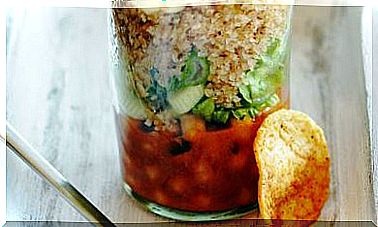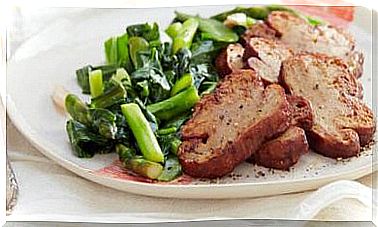Trans Fats: Why Avoid Them And Where They Hide
Vegetable fats are usually healthier, but handling them produces the harmful trans fats. Some manufacturers have started to reduce them.

Today, almost everyone is familiar with the existence of two main types of fats: saturated, the excess of which is linked to an increase in the level of cholesterol in the blood, and unsaturated, which are considered healthy for the heart and The arteries.
But in recent times, a new classification has been gaining importance from a nutritional point of view. This is the distinction between cis fats and trans fats.
The former are the absolute majority form in which fats are presented in nature and natural foods.
The second, trans, can be found in very small percentages in some natural foods (for example, 3 to 5% in milk and meat) but above all they are the result of certain manipulations to which fats are subjected natural.
Of these manipulations, the main one is hydrogenation, used by the food industry to modify the texture of fats and facilitate the preparation of the food product or improve its presentation.
Hence, trans fats can be present, in variable amounts, in a large number of products that are commonly consumed, such as sliced bread and rolls, cookies, industrial pastries and pastries, spreads, snacks, margarines, ice creams and a multitude precooked or pre-fried.
Trans fat: a cardiovascular risk
The increasing presence of this type of fat in the diet has been worrying experts and health authorities, since it has been shown that they are even more harmful than saturated fats.
Trans fats not only raise LDL or “bad” cholesterol, in a similar proportion to saturated ones, but also lower HDL or “good”.
In addition, they increase triglyceride and lipoprotein A concentrations, related to the risk of myocardial infarction.
The concern has resulted in restrictive recommendations regarding its consumption.
Both the American Heart Association, the largest medical society in the world, and the Spanish Heart Foundation advise that your intake does not exceed 1% of total daily calories. On a 2,000-calorie-a-day diet, this represents 2.2 grams, which is almost the equivalent of avoiding them.
What does it mean for a fat to be trans?
“Trans” refers to the biochemical configuration of the fat molecule.
Natural unsaturated fatty acids have a “cis” structure : the hydrogen atoms of each double bond are on the same side.
With hydrogenation, some double bonds go into a “trans” configuration : hydrogen atoms on opposite sides of each double bond.
Why did this type of fat arise?
Years ago the food industry used animal fats (lard, tallow, butter).
When it was known that its saturated fat and cholesterol increased LDL cholesterol, healthier alternatives were sought.
Then partially hydrogenated oils began to be used , of which their negative effects were not known.
How do you know if a product has trans fat?
If partially hydrogenated fats or oils are listed as an ingredient on the package , it has trans fats.
But the amount depends on the degree of hydrogenation, and this information is known only to the producer. It is best to choose products that do not include the phrase “partially hydrogenated.”
Can you calculate the amount of trans?
In Spain, no. In the United States, the Food and Drug Administration (FDA) has required food companies to specify the amount of trans fat on the nutritional label of each container since January 2006.
Denmark, Austria, Switzerland and Iceland are the only European countries that require a limit of trans fats to 2%.
Is partial hydrogenation worse?
Yes. Partially hydrogenated fats or oils contain trans fats.
The oils or fats completely hydrogenated, however, contain especially saturated fats, for the complete hydrogenation converts unsaturated fats saturated, which contain no double bonds trans type.
Can the label be misleading?
Yes. According to the OCU, which analyzed 49 common supermarket products, 80% do not specify the type of fat.
They do not violate the law, which only requires you to put if it is vegetable, animal or hydrogenated.
It is played with the perception of quality, since vegetable oil is usually associated with health, and this is not always the case.
Are they present in margarines?
They may be unevenly.
Some brands have optimized manufacturing and reduced trans fat to less than 1%.
This should not make you forget, however, that margarine is not a staple food, but a complementary one, and that the added fat par excellence is virgin olive oil.
Can its consumption be avoided?
Trans fats are present for their low cost in almost 40% of commonly consumed foods.
But that does not mean that they are a danger that cannot be avoided. In a diet planned from basic, fresh, natural and quality foods, its presence will undoubtedly be very scarce.
Can frying produce trans?
The industrial hydrogenation of vegetable fats is the most common process by which their fatty acids become trans.
But poorly done domestic frying can also transform them into trans.
For this reason it is advisable to use virgin olive oil, not to exceed 180º C and not to reuse the oil more than two or three times.
Is it usual to take too much?
According to the Spanish Food Safety Agency, in Spain the consumption of trans fats is close to 2.1 g / day.
The New England Journal of Medicine sets the limit for adverse effects to begin at 2 g / day, an amount that is very easy to overcome.
There are servings of industrial potato chips that triple this limit.









